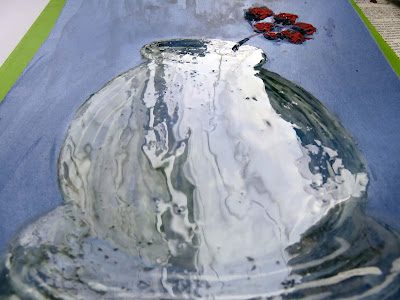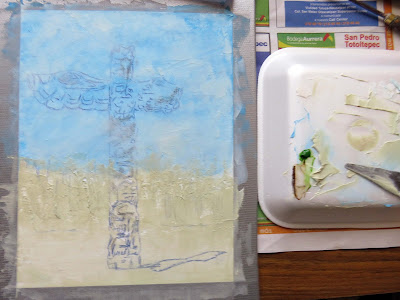This is a selective variation, to represent crystal likeness, making the paint to shine in some additional way and this is the result to follow this process
I´m continuing with this paper, so for this purpose I chose Stardream Zapphire color paper in which my first lines, are made with permanent White "gouache" all those lines are done with a fine brush, takes time but results are better
Completing with some flowers on it made with watercolor
So far the result has been Ok if you want to use just paint, but I want to go a Little bit far therefore my next layer is done with modeling paste mixed with prussian blue, and mixed with brigth red to apply as a sándwich over the glass so some lights will come from below at the end
Again with a fine brush I trow out and reinforce White lines and I start to define some drarker lines with just prussian watercolor to make transparencies on it
Once everything dried I sectively cover the whole base with brigth varnish with a soft big brush
Add more brigth color in the flowers and more additional whites over the varnish wich will break in a random way making the glass appearance more convincent, if you add more wáter with the paint the White becomes more transparent over the varnish making it opaque in some way
The sándwich layering start to work with different tones over it
Next i define again some darker lines and whites base in a light sourcing
Another selective layer of varnish to cover just the opaque zones
Wait to dry and complete with more White lines to add additional reflections on the base





















































